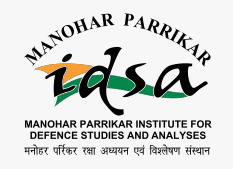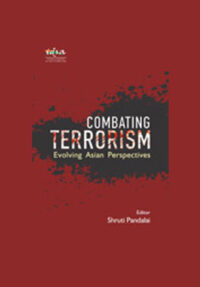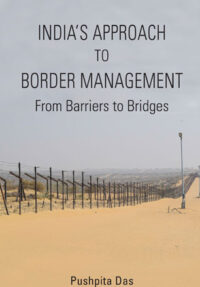Indo-US Counter-Terrorism Cooperation: Rhetoric Versus Substance
Following the 9/11 attacks on the American homeland, India and Pakistan emerged as important states in the US-led Global War on Terrorism (GWOT). The gathering momentum in the Indo-US relations during the Clinton Presidency underwent a dramatic transformation. Although increased cooperation in defence issues is understood to have 'led' the India-US relationship to its current level, it has not culminated in enhanced counter-terrorism cooperation. This perceived lack of cooperation can be located within the perceptual differences on key security issues.
The Naga Narrative of Conflict: Envisioning a Resolution Roadmap
The Naga narrative of dissent is a longstanding issue afflicting India's Northeast. Though attempts are being made to resolve the issue through peaceful dialogue between the Union Government and the resistance groups, earlier peace agreements such as the Nine Point Hydari Agreement and the Shillong Accord failed to garner support from all the different Naga tribes. The local fault lines are also playing a destabilizing role in the current peace process with tribal loyalties transcending group loyalties.
Shaping Security in India’s Maritime East: Role of Andaman & Nicobar
Complex and amorphous threats confront India’s security environment in its maritime East. India has very high stakes in the Bay of Bengal and its adjoining seas. The confluence of vital sea lines makes this region one of great strategic relevance to other powers as well. This translates into both challenges and opportunities for India. The Andaman & Nicobar archipelago had long been perceived as India’s key vulnerability due to its remote location and a history of some of its islands ‘slipping away’ from the Indian dominion. Such wariness may be unfounded in the present times.
Terror Trends: Mega Cities, Maximum Impact
The security environment of India is in a critical phase, repeatedly challenged by terrorism, with outfits operating out of Pakistan continuing to be highly active and finding new and unexpected targets. Trend analyses over the years indicate that the targets, motives and operatives have changed. Terrorist attacks are no more targeted mainly at security forces and government establishments, but have expanded to include strikes against India’s economic and strategic assets.
The Problem of Kashmir and the Problem in Kashmir: Divergence Demands Convergence
India and Pakistan have fought four wars over Kashmir and have held several rounds of talks to resolve the 57-year-old issue, but without any tangible success. The only progress thus far has been that India has agreed to discuss the issue as part of the composite dialogue process and Pakistan has shown willingness to explore options other than the UN resolutions on Kashmir. Although both India and Pakistan appear trying to breakaway from the past and think afresh on Kashmir, yet both fail to bring about any significant policy shifts.
Vivek Chadha, Low Intensity Conflicts in India: An Analysis
Low intensity conflicts in India, despite a long history and a major threat to national security, have remained substantially under-researched. Though a number of books have been written on the various aspects of low intensity conflicts, one still finds gap in the scholarship, particularly in areas relating to its varied dimensions, factors that sustain them, extremist groups – their interests, leadership, mobilisation strategy, financial resources, and other dimension of state intervention, including the role of various security forces.
The Earthquake in Kashmir
The massive destruction caused by the earthquake in India and Pakistan has thrown up huge challenges of rescue, relief and rehabilitation. The magnitude of the destruction means that reconstruction and rehabilitation in the affected areas is going to be a long process. There are reports that the death toll in Pakistan Occupied Kashmir (PoK) and Northern Territories could cross 50,000. The losses in India have been comparatively less, and despite the huge difficulties of terrain authorities have effectively engaged in overcoming the effects of the tragedy.
Delhi Blasts, Terror Networks and India’s Internal Security
A series of bomb blasts in Delhi on October 29, 2005, that left 66 dead and 220 injured has, once again, underlined the acute vulnerability of major Indian cities to international terrorism. The blasts in Sarojini Nagar, Paharganj and a Delhi Transport Corporation (DTC) bus in Govindpuri were well-orchestrated, nearly simultaneous, and targeted crowed markets and city centres.








